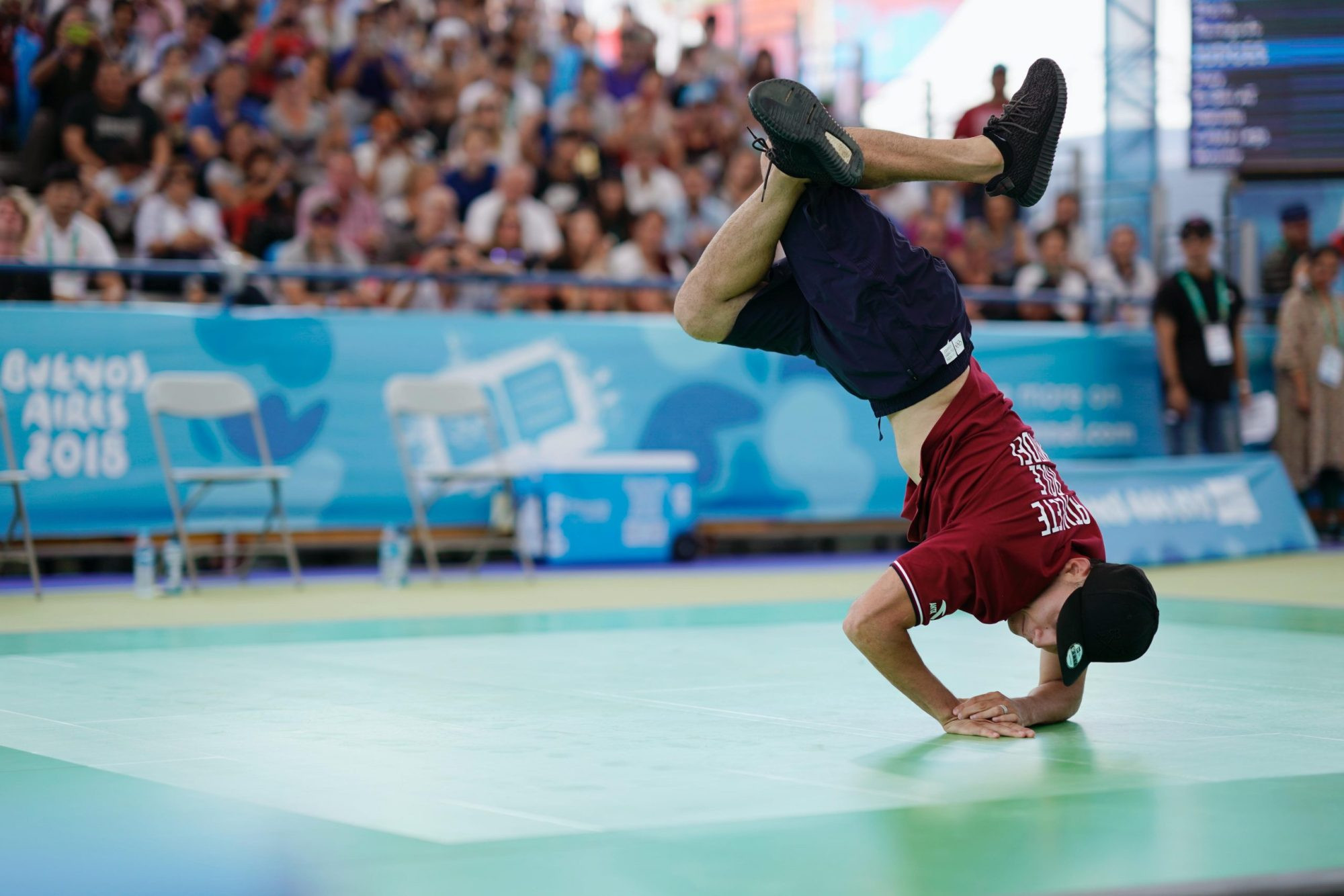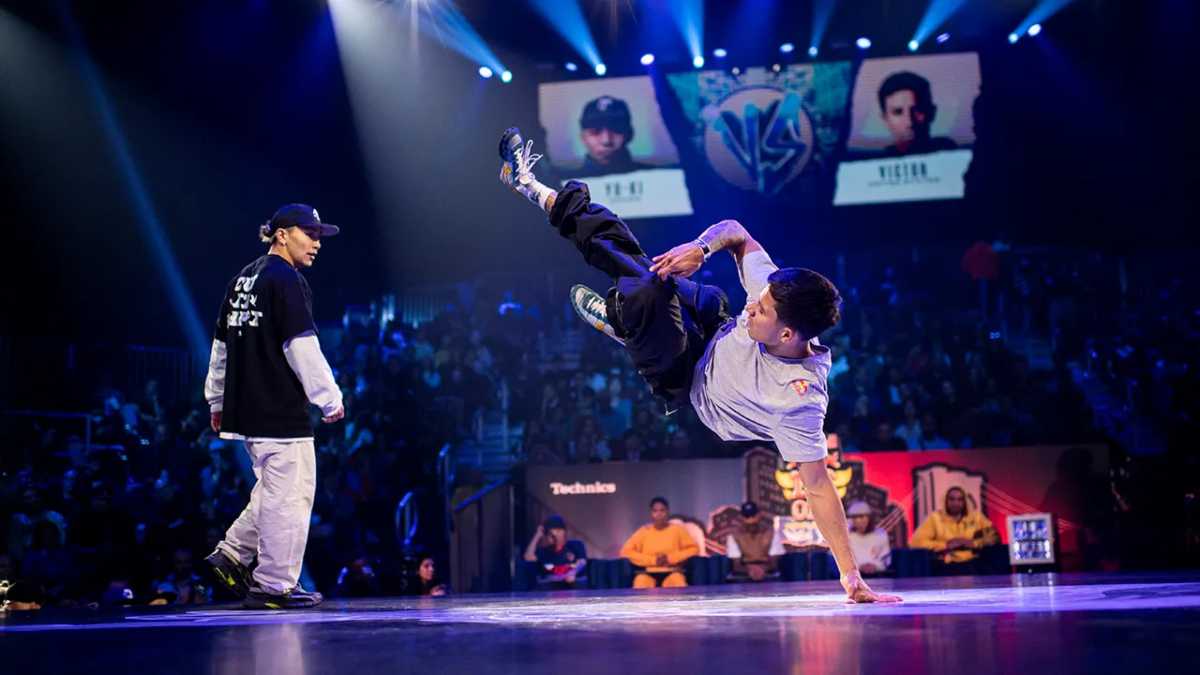Historical Moments of “Breaking” at the Olympics

The Olympic Games have witnessed countless feats of athletic prowess and human spirit. Throughout history, athletes have pushed the boundaries of what was considered possible, shattering records and inspiring generations. These “breaking” moments, often marked by innovation, dedication, and sheer determination, have left an indelible mark on the world of sports and beyond.
Breaking Records and Pushing Boundaries, Breaking at the summer olympics
These “breaking” moments have not only redefined athletic achievements but have also sparked technological advancements, fueled societal change, and fostered global unity.
- Jesse Owens’ Triumph at the 1936 Berlin Olympics: Jesse Owens, an African American athlete, defied Nazi ideology and racial prejudice by winning four gold medals in track and field at the 1936 Berlin Olympics. His performance, a testament to his exceptional talent and unwavering spirit, shattered the myth of Aryan supremacy and became a symbol of hope and resistance against racial discrimination.
- Roger Bannister’s Sub-Four-Minute Mile: In 1954, Roger Bannister, a British physician, became the first person to run a mile in under four minutes. This achievement, long considered an insurmountable barrier, shattered a psychological barrier and opened the door for further breakthroughs in distance running.
- Bob Beamon’s Historic Long Jump at the 1968 Mexico City Olympics: Bob Beamon, an American long jumper, set a world record in Mexico City in 1968 that stood for 23 years. His jump, exceeding the previous record by almost two feet, was attributed to the altitude of Mexico City, which reduced air resistance. This moment showcased the potential for human performance at higher altitudes and inspired further research into the effects of altitude on athletic performance.
- Michael Phelps’ Dominance in Swimming: Michael Phelps, an American swimmer, holds the record for the most Olympic gold medals won by an individual athlete (28). His exceptional talent and dedication to the sport redefined the limits of swimming, breaking numerous world records and inspiring a generation of swimmers.
- Usain Bolt’s Unprecedented Speed: Usain Bolt, a Jamaican sprinter, holds the world records for the 100 meters, 200 meters, and 4 x 100 meters relay. His dominance in sprinting, characterized by his lightning-fast speed and captivating personality, has captivated the world and elevated sprinting to new heights of popularity.
The Science and Psychology of Breaking Records: Breaking At The Summer Olympics

Breaking records in any sport requires a unique combination of physical prowess, mental fortitude, and strategic planning. Athletes pushing the boundaries of human performance must train rigorously, optimize their nutrition, and leverage technological advancements to achieve peak performance. Additionally, they must cultivate a resilient mindset, characterized by unwavering focus, unshakeable self-belief, and a relentless pursuit of excellence.
The Role of Training
Training plays a pivotal role in maximizing an athlete’s potential and breaking records. It involves a structured and systematic approach to developing physical attributes, such as strength, speed, endurance, and flexibility. Athletes work with coaches to design individualized training programs that address their specific needs and goals.
Training Methods
- Strength Training: Strength training is crucial for developing the power and explosiveness needed for breaking records. Athletes engage in various exercises, such as weightlifting, plyometrics, and resistance training, to enhance muscle mass and strength.
- Endurance Training: Endurance training is essential for building stamina and sustaining high levels of performance over extended periods. This may involve long-distance running, swimming, or cycling, depending on the sport.
- Speed Training: Speed training focuses on improving acceleration, top speed, and reaction time. Athletes utilize drills, sprints, and agility exercises to enhance their speed and quickness.
- Flexibility and Mobility Training: Flexibility and mobility training are vital for optimizing range of motion, reducing injury risk, and improving overall athletic performance. Athletes incorporate stretching, yoga, and other exercises to enhance flexibility and mobility.
Training Strategies
- Periodization: Periodization involves systematically varying training intensity and volume over time to optimize performance. This approach typically involves distinct phases, such as a preparatory phase focusing on building a base, a competitive phase prioritizing performance, and a recovery phase for rest and rejuvenation.
- Progressive Overload: Progressive overload is a key principle in training, involving gradually increasing the demands placed on the body over time. This could involve increasing the weight lifted, the distance covered, or the intensity of the training session.
- Specificity: Training should be specific to the demands of the sport. For example, a sprinter will focus on training that improves speed and acceleration, while a marathon runner will prioritize endurance training.
The Importance of Nutrition
Nutrition is a crucial aspect of achieving peak performance and breaking records. Athletes require a balanced and nutrient-rich diet to fuel their training, support muscle recovery, and optimize their overall health.
Dietary Considerations
- Macronutrients: Athletes need to consume adequate amounts of carbohydrates, proteins, and fats to provide energy, support muscle growth, and promote recovery. The specific macronutrient ratios vary depending on the sport and training intensity.
- Micronutrients: Micronutrients, such as vitamins and minerals, play vital roles in various bodily functions, including energy production, immune system support, and muscle recovery. Athletes must ensure they are consuming sufficient amounts of essential vitamins and minerals through their diet.
- Hydration: Staying adequately hydrated is essential for optimal performance and preventing dehydration. Athletes need to consume fluids throughout the day, especially during training and competition.
Nutritional Strategies
- Pre-Competition Meals: Athletes should consume a balanced meal several hours before competition to provide sustained energy and prevent fatigue. The meal should include carbohydrates, proteins, and healthy fats.
- Post-Competition Recovery Meals: After competition, athletes need to replenish their energy stores and support muscle recovery. Consuming a meal rich in carbohydrates and protein within two hours of competition is recommended.
- Supplementation: While a balanced diet should provide all the essential nutrients, some athletes may benefit from supplementation. This could include protein powder, creatine, or multivitamins, depending on individual needs and goals.
The Role of Technology
Technological advancements have significantly impacted athletic performance and record-breaking achievements. From biomechanical analysis to performance tracking, technology provides athletes and coaches with valuable insights to optimize training and improve performance.
Technological Advancements
- Biomechanical Analysis: Motion capture technology and force plates allow athletes and coaches to analyze movement patterns and identify areas for improvement. This data helps athletes optimize technique, reduce injury risk, and enhance performance.
- Performance Tracking: Wearable devices and GPS tracking systems provide athletes and coaches with real-time data on performance metrics such as speed, distance, heart rate, and calories burned. This information helps athletes monitor progress, identify areas for improvement, and personalize training programs.
- Ergonomic Equipment: Technological advancements in equipment design have led to lighter, more efficient, and more aerodynamic gear, allowing athletes to perform at higher levels. Examples include aerodynamic swimsuits, lightweight running shoes, and high-tech bicycles.
- Virtual Reality Training: Virtual reality technology allows athletes to train in simulated environments, providing immersive and realistic experiences. This can be particularly beneficial for sports that involve complex movements or high-pressure situations.
The Psychology of Breaking Records
Beyond physical preparation, breaking records requires a strong mental game. Athletes must develop resilience, focus, and unwavering self-belief to overcome challenges, maintain motivation, and perform at their best under pressure.
Mental Skills for Record-Breaking
- Motivation: Strong motivation is essential for driving athletes to push their limits and strive for greatness. Athletes need to have a clear vision of their goals and a deep-seated desire to achieve them.
- Focus: Maintaining focus is crucial for performing at the highest level. Athletes need to be able to block out distractions and concentrate on the task at hand. This involves developing techniques for controlling attention and staying present in the moment.
- Resilience: Breaking records often involves setbacks and challenges. Athletes must develop resilience to bounce back from adversity, learn from mistakes, and maintain a positive mindset.
- Self-Belief: Unwavering self-belief is essential for athletes to perform at their best. They need to believe in their abilities and their capacity to achieve their goals, even when faced with doubt or uncertainty.
Psychological Strategies
- Goal Setting: Setting clear and specific goals provides athletes with direction and motivation. Goals should be challenging but achievable, and they should be broken down into smaller, more manageable steps.
- Visualization: Visualization involves mentally rehearsing the desired performance, imagining oneself successfully executing the required movements and achieving the desired outcome. This technique can help athletes build confidence, improve focus, and enhance performance.
- Positive Self-Talk: Positive self-talk involves replacing negative thoughts with encouraging and supportive statements. This can help athletes maintain a positive mindset, boost confidence, and enhance motivation.
- Stress Management: Athletes need to develop effective stress management techniques to cope with the pressure of competition. This could involve relaxation techniques, mindfulness exercises, or seeking professional support.
Breaking at the Summer Olympics is a sight to behold! The raw energy and athleticism of these dancers is truly captivating. From the intricate footwork to the gravity-defying spins, breaking is a testament to human skill and creativity. It’s no wonder that olympic breaking has become a global phenomenon, attracting a new generation of fans.
And with the inclusion of breaking in the Summer Games, we can expect to see even more awe-inspiring performances in the years to come.
Imagine the pressure of competing in the Summer Olympics, the world watching your every move. It’s a moment that can make or break a career, a testament to years of dedication. But sometimes, even the most monumental events can be overshadowed by forces beyond our control, like the Japan earthquake and tsunami warning that once gripped the nation.
In the face of such natural disasters, even the biggest sporting events take a backseat, reminding us that life’s true triumphs lie in our ability to adapt and persevere.